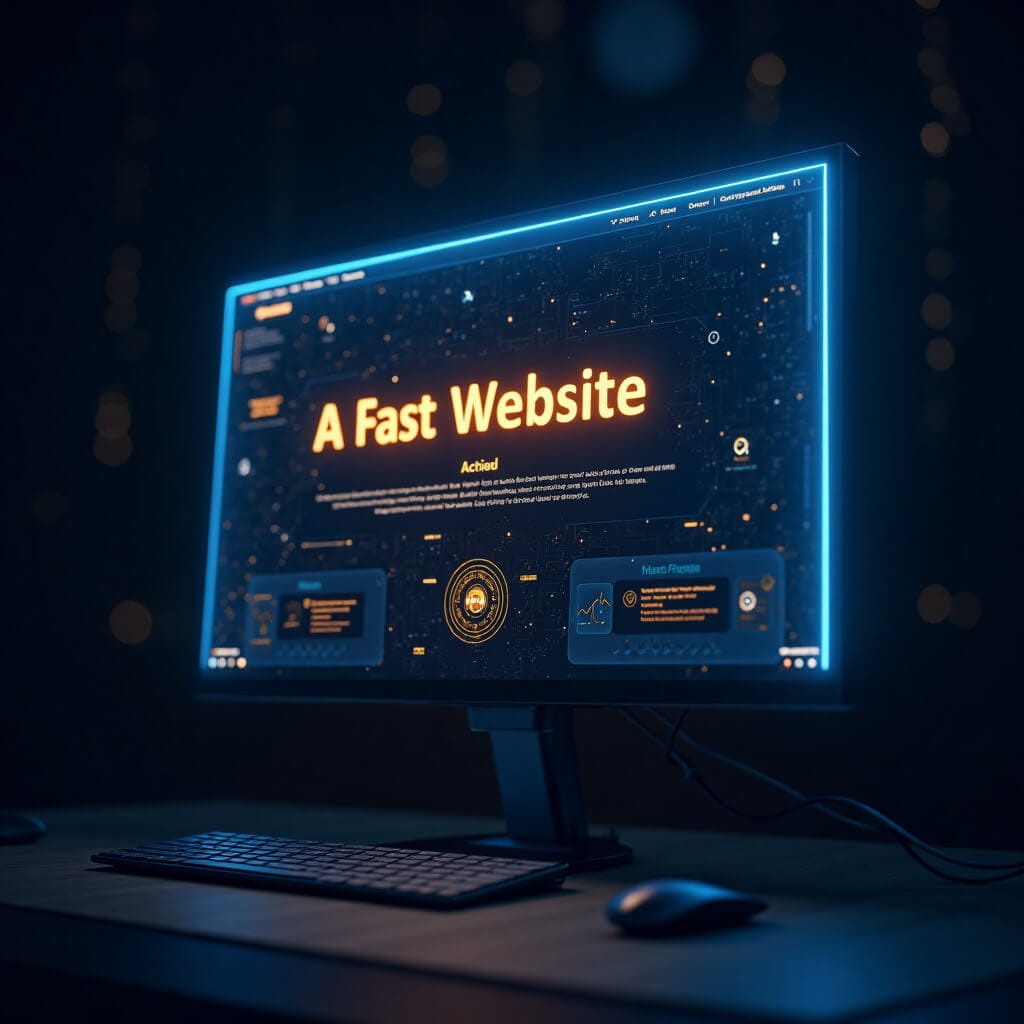You’ve probably already had to deal with a site that takes forever to load. You wait. Nothing happens. You wait some more. Then, all of a sudden, you close the tab and move on. Well, your visitors are doing exactly the same thing.
A slow website is a bit like a crowded waiting room: everyone gets impatient and ends up leaving before they’ve even been served. And it’s not just a question of comfort, it’s also a question of SEO.
Today, site speed is an essential criterion for Google. A slow site will rank lower in the search results and, let’s face it, nobody ever makes it to the second page of Google.
So why is your site slow and, more importantly, what can you do about it? We explain it all!
Google and speed: a love affair (and a ranking affair)
Over the past few years, Google has been on the hunt for slow sites. Its algorithm now incorporates what are known as Core Web Vitals. Behind this somewhat barbaric name lie three essential criteria:
If your site doesn’t meet these criteria, it will be relegated to the back burner of search results. And no one will be looking for you there.
Why is a fast site essential (and not just for Google)?
A slow site isn’t just bad for SEO. It’s also a conversion killer.
In plain English
A fast site attracts more visitors, keeps them longer and encourages them to take action.
The culprits: why is your site slow?
If your site takes forever to load, it may be the fault of :
In short, there’s work to be done.
Solutions for an ultra-fast site
1️⃣ Optimizing images
📌 Problem: Your images are too heavy.
✅ Solution:
- Convert to WebP instead of the classic JPEG/PNG.
- Enable lazy loading to load images only when they appear on screen.
- Compress files with TinyPNG, Imagify or ShortPixel.
2️⃣ Minifying and compressing code
📌 Problem: Your site loads a ton of useless CSS and JavaScript files.
✅ Solution:
- Minimize CSS and JS with Autoptimize or WP Rocket.
- Load JavaScript offline with async or defer attributes.
3️⃣ Set up a cache system
📌 Problem: Your site reloads everything on every visit.
✅ Solution:
- Install a cache plugin(WP Rocket, W3 Total Cache, LiteSpeed Cache).
- Enable browser caching to temporarily store resources with users.
4️⃣ Choosing the right accommodation
📌 Problem: Your server is slow.
✅ Solution:
- Choose optimized hosting(Infomaniak, SiteGround, Kinsta).
- Opt for servers with NVMe SSDs.
- Activate a CDN (Cloudflare, BunnyCDN) to load the site faster worldwide.
5️⃣ Eliminate the superfluous
📌 Problem: Too many plugins, too many unnecessary scripts.
✅ Solution:
- Uninstall unused plugins.
- Load only the scripts required on the pages concerned.
- Remove unused Google fonts and reduce external requests.
Free tools to test your site’s speed
Want to know how fast your site is (or isn’t)? Here are a few essential tools:
🔹 Google PageSpeed Insights → See what Google thinks of your site.
🔹 GTmetrix → Detailed analysis of file loading.
🔹 WebPageTest → Advanced tests and slow connection simulation.
🔹 Lighthouse (Chrome DevTools) → Complete performance audit.
🔹 Solarwinds Pingdom → Loading time
💡 Objective: A score above 90 on PageSpeed Insights.
Conclusion: A fast site is a site that performs well.
A slow site means less traffic and fewer customers. A fast site means :
At Pyxa, we help companies optimize the speed and performance of their website.
💡 Need an SEO audit? Contact us today!

Leave a Reply